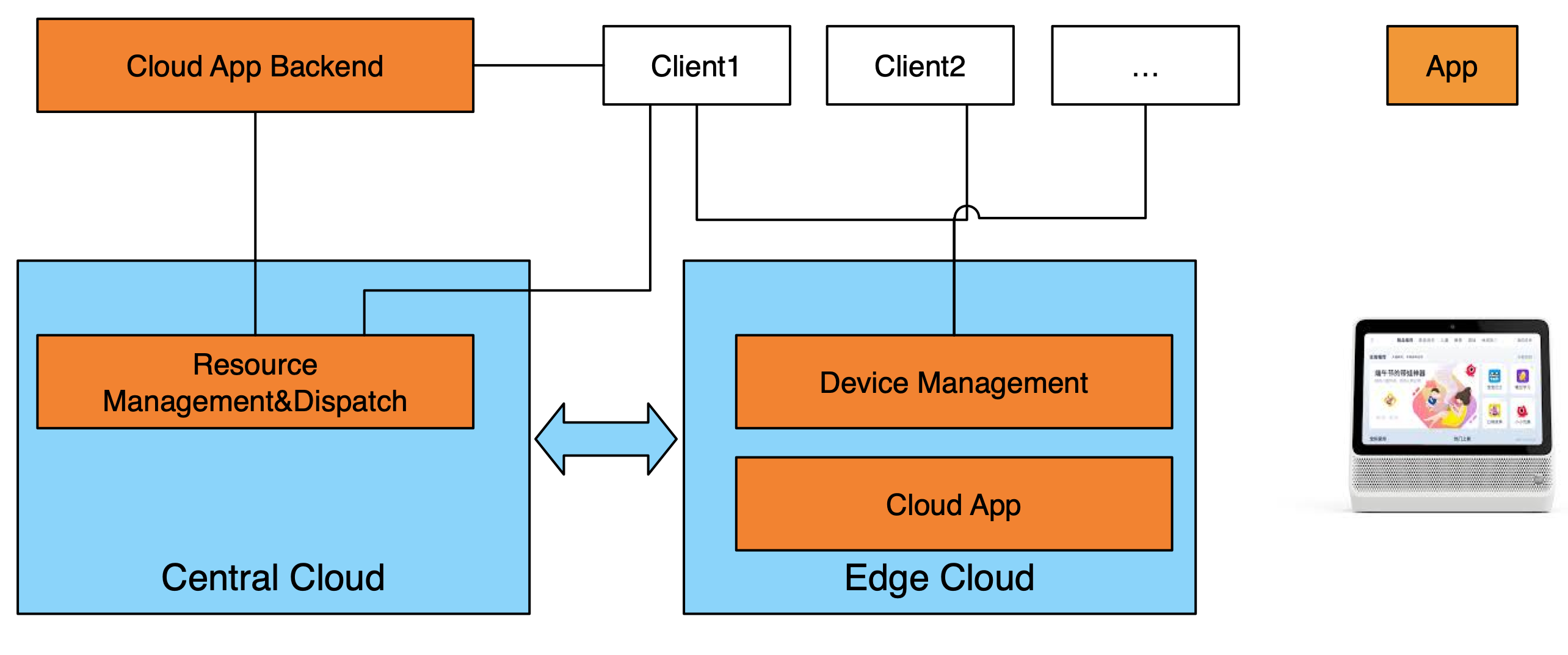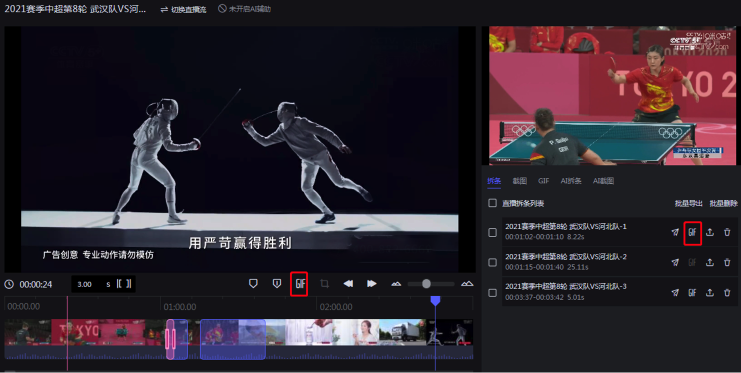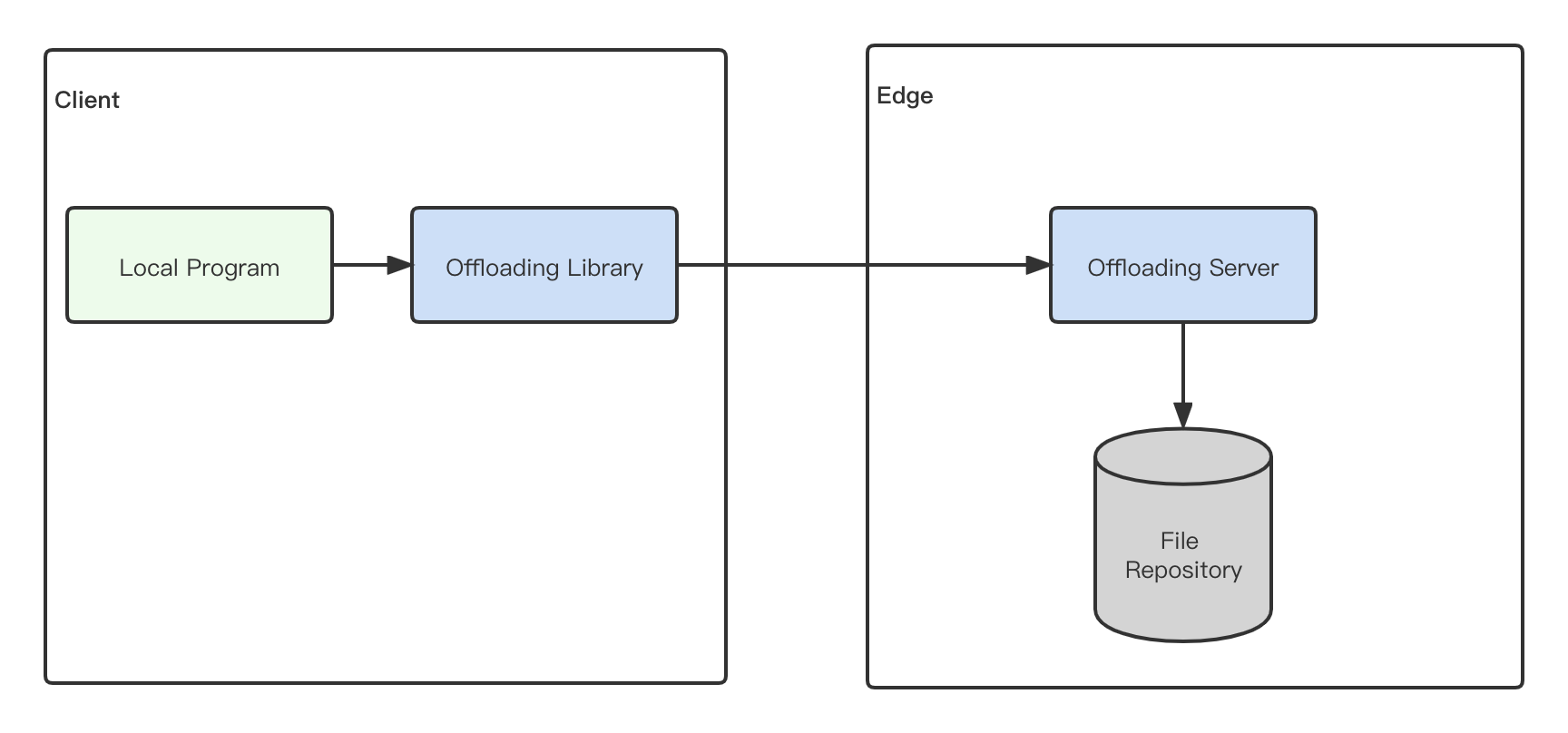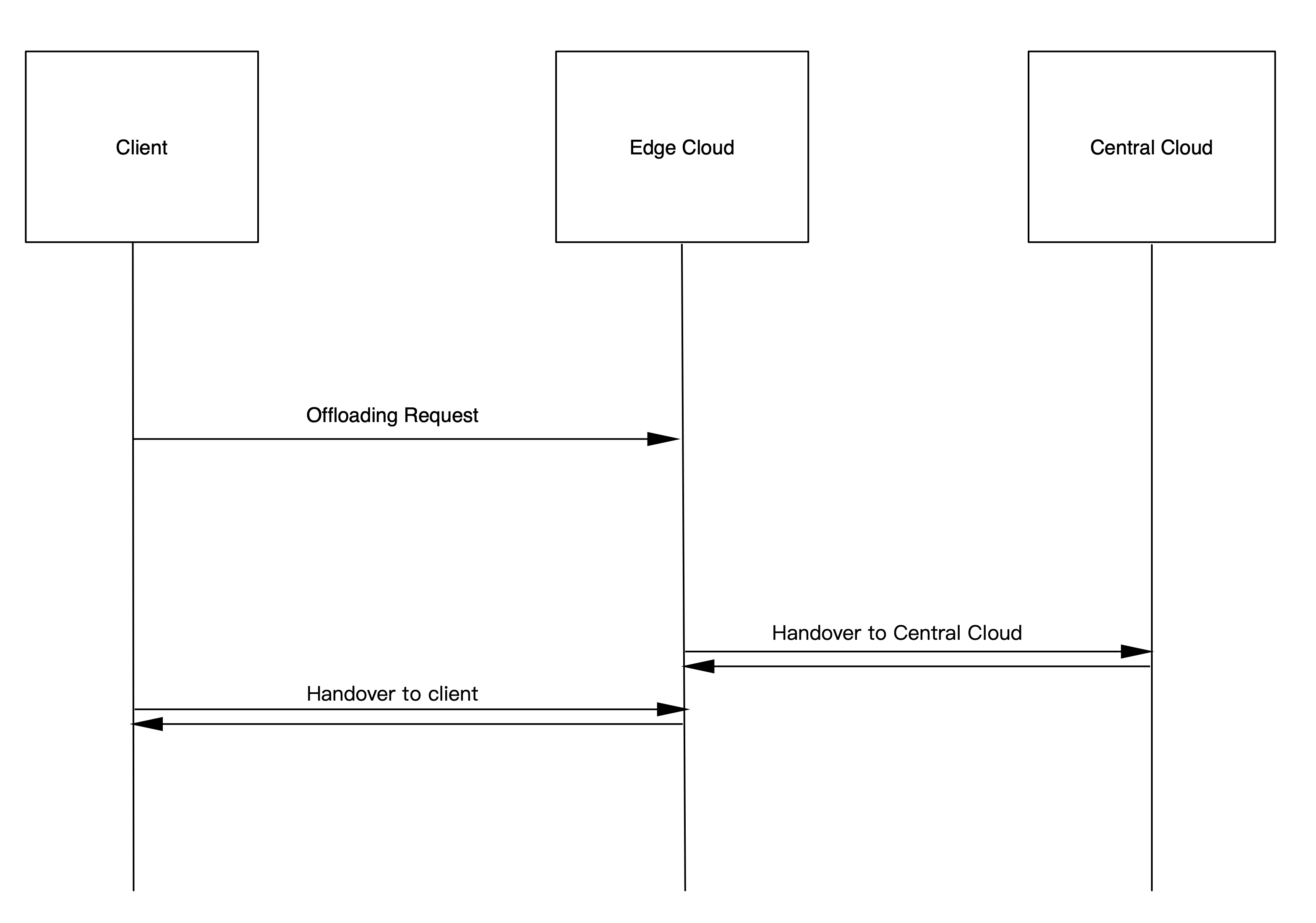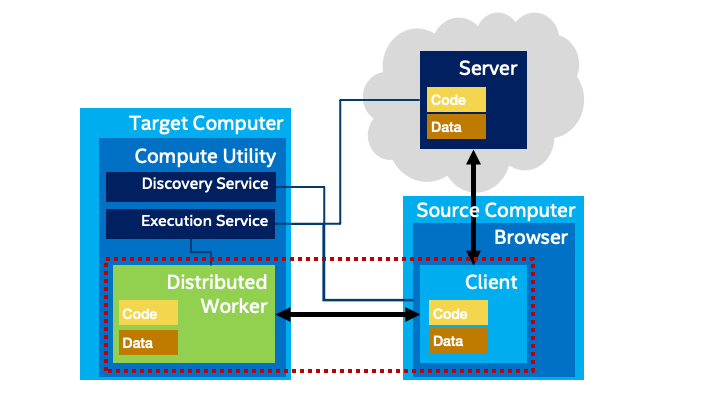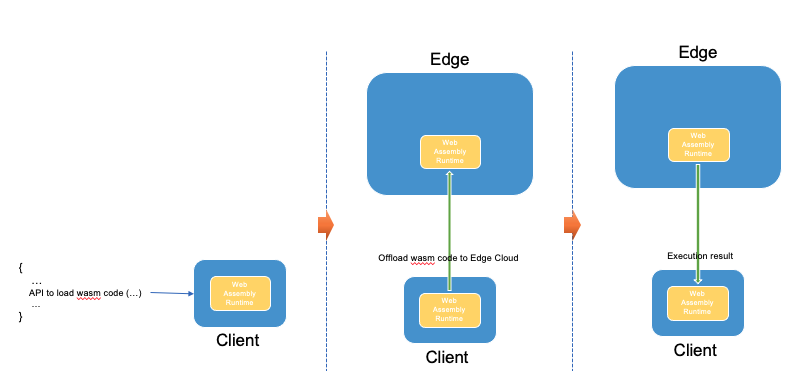| Performance |
R1: Client Offload |
Clients should be able to offload computing intensive work
to an Edge Resource. |
UC-CA
UC-VR
UC-CG
UC-SA
UC-VC
UC-MLA
UC-IVPU
UC-PWMP
UC-BR
UC-LVB
UC-ALPR
UC-RNA
UC-CM
|
| Resiliency |
R2a: Application-Directed Migration |
The application should be able to explicitly manage migration
of work between Computing Resources.
This may include temporarily running a workload on
multiple Computing Resources to hide transfer latency.
|
UC-CA
UC-VR
UC-CG
UC-SA
UC-VC
UC-MLA
UC-IVPU
UC-PWMP
UC-BR
UC-LVB
UC-ALPR
UC-RNA
UC-CM
|
| Resiliency |
R2b: Live Migration |
The Edge Cloud should be able to transparently migrate
live (running) work between Computing Resources.
This includes between Edge Resources, Cloud Resources,
and back to the client, as necessary.
If the workload is stateful,
this includes state capture and transfer. |
UC-CA
UC-VR
UC-VC
|
| Flexibility |
R3: Discovery |
A client should be able to dynamically enumerate available
Edge Resources. |
UC-CA
UC-VR
UC-CG
UC-SA
UC-VC
UC-MLA
UC-IVPU
UC-PWMP
UC-BR
UC-LVB
UC-ALPR
UC-RNA
UC-CM
|
| Flexibility |
R4: Selection |
A client should be able to select between available resources,
including making a decision about whether offload is appropriate
(e.g., running on the client may be the best choice).
This selection may be automatic or application-directed,
and may require metadata or measurements
of the performance and latency of Edge Resources,
and may be static or dynamic.
To do: perhaps break variants down into separate sub-requirements.
Also, it needs to be clear about how this is different
from the out-of-scope issue "Offload policy".
|
UC-CA
UC-VR
UC-CG
UC-SA
UC-VC
UC-MLA
UC-IVPU
UC-PWMP
UC-BR
UC-LVB
UC-ALPR
UC-RNA
UC-CM
|
| Flexibility |
R5: Packaging |
A workload should be packaged so it can be executed on
a variety of Edge Resources.
This means either platform independence OR a means to
negotiate which workloads can run where. |
UC-CA
UC-VR
UC-CG
UC-SA
UC-VC
UC-MLA
UC-IVPU
UC-PWMP
UC-BR
UC-LVB
UC-ALPR
UC-RNA
UC-CM
|
| Flexibility |
R6: Persistence |
It should be possible for a workload to be run "in the background",
possibly event-driven, even if the client is not active.
This also implies lifetime management (cleaning
up workloads under some conditions,
such as if the client has not connected for a certain amount
of time, etc.) |
UC-CA
UC-VR
UC-CG
UC-SA
UC-VC
UC-MLA
UC-IVPU
UC-PWMP
UC-BR
UC-LVB
UC-ALPR
UC-RNA
UC-CM
|
| Security, Privacy |
R7: Confidentiality and Integrity |
The client should be able to control and protect the data used
by an offloaded workload.
Note: this may result in constraints upon the selection of offload targets, but
it also means data needs to be protected in transit, at rest, etc.
|
UC-CA
UC-VR
UC-CG
UC-SA
UC-VC
UC-MLA
UC-IVPU
UC-PWMP
UC-BR
UC-LVB
UC-ALPR
UC-RNA
UC-CM
|
| Control |
R8: Resource Management. |
The client should be able to control
the use of resources by an
offloaded workload on a per-application basis.
Note: If an Edge Resource has a usage charge, for example,
a client may want to set quotas on offload,
and some applications may need more resources than others.
This may also require a negotiation,
e.g., a workload may have minimum requirements,
making offload mandatory on limited clients.
This is partially about QoS as it relates to performance
(making sure a minimum amount of resources is available)
but is also about controlling charges (so a web app does
not abuse the edge resources paid for by a client).
|
UC-CA
UC-VR
UC-CG
UC-SA
UC-VC
UC-MLA
UC-IVPU
UC-PWMP
UC-BR
UC-LVB
UC-ALPR
UC-RNA
UC-CM
|
| Scalability |
R9: Statelessness |
It should be possible to identify workloads that
are stateless so they can be run in a more scalable
manner, using FaaS cloud mechanisms.
|
UC-CA
UC-VR
UC-CG
UC-SA
UC-VC
UC-MLA
UC-IVPU
UC-PWMP
UC-BR
UC-LVB
UC-ALPR
UC-RNA
UC-CM
|
| Compatibility |
R10: Stateful |
It should be possible to run stateful workloads,
to be compatible with existing client-side
programming model expectations.
|
UC-CA
UC-VR
UC-CG
UC-SA
UC-VC
UC-MLA
UC-IVPU
UC-PWMP
UC-BR
UC-LVB
UC-ALPR
UC-RNA
UC-CM
|
| Performance |
R11: Parallelism |
It should be possible to run multiple workloads in
parallel and/or express parallelism within a single workload.
|
UC-CA
UC-VR
UC-CG
UC-SA
UC-VC
UC-MLA
UC-IVPU
UC-PWMP
UC-BR
UC-LVB
UC-ALPR
UC-RNA
UC-CM
|
| Performance |
R12: Asynchronous |
The API for communicating with a running workload
should be non-blocking (asynchronous) to hide the
latency of remote communication and allow the
main (user interface) thread to run in parallel with the
workload (even if the workload is being run on the client).
|
UC-CA
UC-VR
UC-CG
UC-SA
UC-VC
UC-MLA
UC-IVPU
UC-PWMP
UC-BR
UC-LVB
UC-ALPR
UC-RNA
UC-CM
|
| Security |
R13: Sandboxing |
A workload should be specified and packaged in such
a way that it can be run in a sandboxed environment and its
access to resources can be managed.
|
UC-CA
UC-VR
UC-CG
UC-SA
UC-VC
UC-MLA
UC-IVPU
UC-PWMP
UC-BR
UC-LVB
UC-ALPR
UC-RNA
UC-CM
|
| Performance, Compatibility |
R14: Acceleration |
A workload should have (managed) access to accelerated
computing resources when appropriate, such as AI accelerators.
Note: Since the availability of these resources may vary between
Computing Resources these need to be taken into account
when estimating performance and selecting a Computing
Resource to use for offload. Access to such resources
should use web standards, e.g., standard WASM/WASI APIs.
|
UC-CA
UC-VR
UC-CG
UC-SA
UC-VC
UC-MLA
UC-IVPU
UC-PWMP
UC-BR
UC-LVB
UC-ALPR
UC-RNA
UC-CM
|
